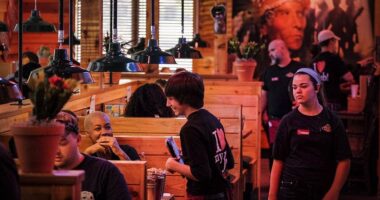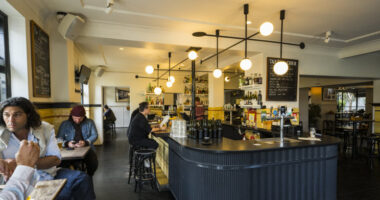WE ARE FACING a catastrophic biodiversity crisis. The natural systems we all depend upon are in peril. Perhaps nowhere is this more obvious than in Ireland – a country almost completely bereft of intact ecosystems. Today, only 1-2% of Ireland is covered by healthy native woodlands. In a country that was once covered by forest, including temperate Atlantic rainforest, a unique and beautiful habitat, this is not only heart-breaking to think of, but it is threatening life as we know it, as the health of humans and healthy biodiverse forests are intrinsically linked. We need drastic, tangible action if we are to restore our natural world and protect human health. Ireland’s seven (soon to be eight with the new national park in the Corca Dhuibhne area of Co Kerry) national parks combined cover a meagre ~1% (~750 Km2) of Ireland’s land area. For comparison, Scotland’s two national parks, Loch Lomond and The Trossachs National Park and Cairngorms National Park combined cover almost 6400 km2. This equates to ~8% of Scotland’s land area. Furthermore, according to the Scottish Rewilding Alliance, more than 2% of Scotland’s land is now rewilding. There are even calls to make Scotland the world’s first rewilding nation. Further afield, 30 % of New Zealand’s land area is designated for national parks. What can Ireland do? Irish national parks remain small, isolated areas overrun by a common theme of overgrazed and barren hills, invasive species and spruce plantations. At present, the use of the term ‘national park’ misleads people into believing that something is being done to restore and protect nature. The reality, however, is that Irish national parks are a shadow of what they ought to be. As part of its Strategic Plan 2023-25, the National Parks and Wildlife Service is due to publish National Park management plans by the end of 2024. The plans will include a full public consultation and appropriate environmental assessments. We need an entirely new approach to nature restoration and protection in Ireland, and we need an entirely new approach to national parks. We need new legislation to define what a national park is and what its purpose is. However, perhaps most importantly, we need to give nature constitutional rights. The passing of the EU nature restoration law should be the spark we need to make these changes in Ireland. So what are the alternatives? What can we do? A proposed example: a reimagined Páirc Naisiúnta Chonamara. An area where humans and nature could thrive together. Let’s make all of Connemara into a large, 2000 km2, ambitious national park. Nature restoration, rewilding and nature conservation at scale. Let us allow native flora to return to the region which includes a diverse mosaic of blanket bog, forest and montane scrub. Currently, Connemara National Park is far from the sanctuary for nature it ought to be. It is a 20km2 tokenistic tourist trap. Similar to the national park, much of Connemara is an ecological dead zone. The hills and mountains are overgrazed and barren. The only substantial ‘greenery’: spruce plantations and invasive species. It might be subjectively beautiful, but it is a degraded ecosystem. So, what would this reimaged Páirc Naisiúnta Chonamara look like? What would it involve? Connemara might be visually stunning but it’s an ecological dead zone. Alamy Stock Photo Alamy Stock Photo Land management Local communities are the key to such a transformation, with farming being a crucial consideration. Restoring Connemara’s natural landscapes would involve a change to the way the land is managed. If this is done with local communities having decision-making power, there is the potential for immense positive change. The number of sheep allowed to graze the uplands would have to be significantly reduced. This is a difficult and emotional debate, but the current number of grazing sheep combined with an uncontrolled number of deer is preventing native species from recovering. If the grazing pressure is reduced, nature will have a chance to recover. Key to this would be to adequately compensate farmers for loss of income in addition to providing them with alternative employment opportunities, be it direct alternatives to sheep farming, removing invasive species, or nature restoration. Farmers would be at the core of this revitalisation. All spruce plantations should in time be replaced with native ecosystems. Although they might appear green, these spruce plantations are ecological dead zones that in no way resembles true native forests. Again, landowners must be adequately compensated, both today and in the long term. Instead of the non-native Sitka spruce dominating the landscape, we should see a revival of native Irish tree species. Oak, hazel, birch, Scots pine, rowan and willow might once more climb up the hills
Subscribe
Login
0 Comments





